Cartoonists Bookin’ It
Skip to commentsRaina Telgemeier and Scott McCloud are co-chairs; Connie Zeigler on Brenda Starr and Dale Messick; Phil Witte – counsellor, cartoonist, critic; Barbara Shermund biographer Caitlin McGurk; Terry Laban – graphic novelist; Beginning: Alex Raymond’s Flash Gordon.
Telgemeier, McCloud chosen as National Library Week honorary chairs
From the American Library Association:
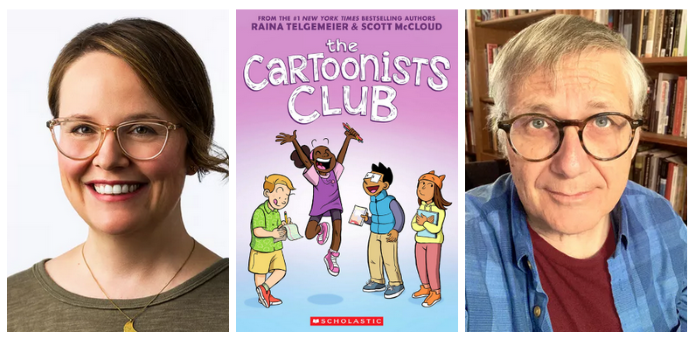
CHICAGO — Award-winning author and illustrator Raina Telgemeier and cartoonist and comic theorist Scott McCloud have been selected Honorary Chairs of the American Library Association’s National Library Week, April 6-12, 2025. The week celebrates the important role libraries and library professionals play in schools and communities.
Telgemeier and McCloud have partnered to create a one-of-a-kind graphic novel, “The Cartoonists Club,” [link added] coming from Scholastic’s Graphix imprint on April 1, 2025. They are also opening speakers for ALA’s LibLearnX, The Library Learning Experience for library professionals, in January 2025 in Phoenix.
Their book tells the story of Makayla, who is bursting with ideas but doesn’t know how to make them into a story, and Howard, who loves to draw but struggles to come up with ideas.
Interview: Indiana’s Dale Messick broke barriers for women cartoonists
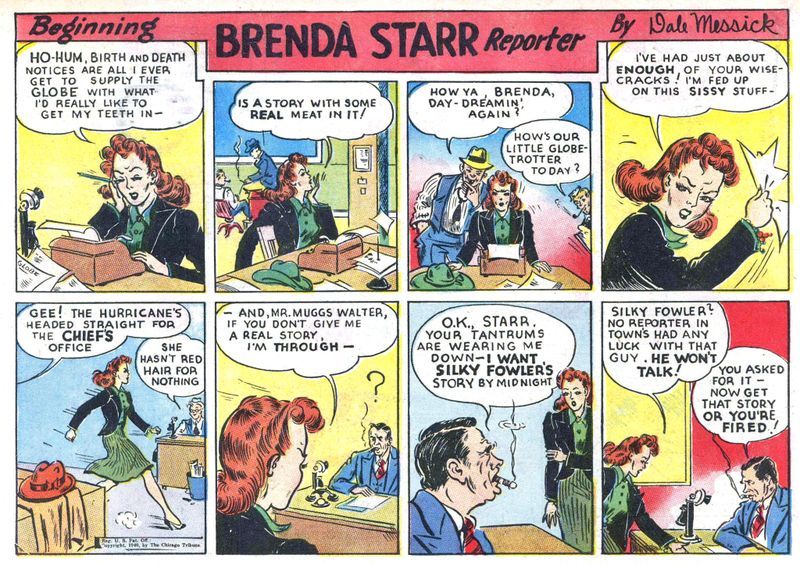
The comic strip “Brenda Starr, Reporter” [link added] first appeared on newspaper pages in 1940. The strip’s lead character, an adventurous and glamorous news reporter named Brenda Starr, stood out in the male dominated world of comic strip heroes.
So too did its creator, Dale Messick, born Dalia Messick in South Bend, Indiana in 1906.
The architecture and design historian Connie Zeigler researched Messick’s life for a new publication titled “Dale Messick and Brenda Starr, Breaking Barriers and Hitting Deadlines,” [link added] part of the Commercial Article book series published by the Indianapolis design studio Commercial Artisan.
Zeigler grew up reading the Brenda Starr comic strip in the Indianapolis Star.
Zeigler: Dale was treated very much like, “What a cute thing she is. Isn’t she doing a cute comic strip with a girl who’s in trouble a lot.” By the way, Dale’s real name was Dalia. The story that she told was that she couldn’t get seen by editors with a woman’s name, so she chose a gender neutral name to put on her comic strips. She believed that was how she ended up with her first published comic strip Brenda Starr.
Former attorney Phil Witte, JD’83, quit his job to be a cartoonist. Now he has a book of cartoon criticism.
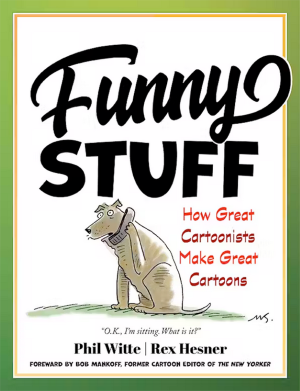
Witte worked in litigation after law school—“That was suited to my personality,” he says, “more competitive in some ways”—and ended up specializing in insurance law, becoming a partner at what was then Morison & Prough. Typical cases involved complex environmental claims or large-scale bank fraud. How complex, how large? “They had to have special courtrooms built just to hold all the lawyers sometimes,” he says.
Meanwhile, around 2004, Witte began drawing cartoons in his spare hours.
Funny Stuff [link added] is not a how-to book, although its close analysis could serve as a road map for aspiring cartoonists … It’s more like a guide for deepening your cartoon appreciation—perhaps even becoming a cartoon connoisseur.
Virtual Memories Show 614: Caitlin McGurk (and Barbara Shermund)
From Chimera Obscura comes Virtual Memories Show 614: Caitlin McGurk, an audio interview.
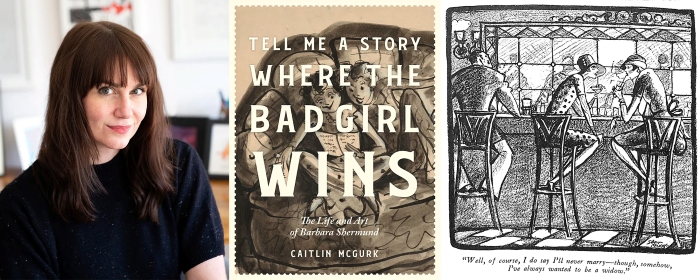
Comics librarian and curator Caitlin McGurk returns to the show to celebrate her amazing new book, TELL ME A STORY WHERE THE BAD GIRL WINS: The Life and Art of Barbara Shermund (Fantagraphics).
We get into the gestalt of Barbara’s fantastic linework and washes and her wry sense of humor, why Caitlin wound up writing an academic press version of the book before rewriting it for a trade publisher, the challenges & rewards of designing a book to showcase so much art, how Barbara helped create the look of The New Yorker in its early years, why Caitlin speculated (but not too much) about Barbara’s sexuality.
“I would not advise anyone to write a book about an artist with whom there are no interviews, almost no photographs, no surviving relatives or real documentation about them whatsoever.”
Q & A with Terry LaBan
From Publishers Weekly comes an interview with newly printed graphic novelist:
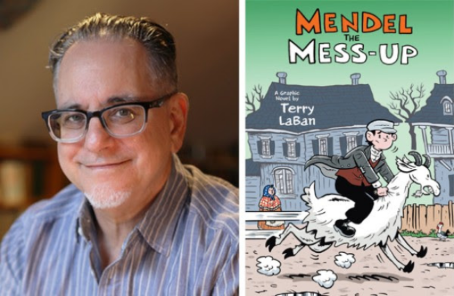
A long and winding road with a lot of unexpected turns” is how Terry LaBan describes the publication of his first graphic novel, Mendel the Mess-Up. It could also serve as a synopsis of the work itself: 12-year-old hapless Mendel is the bane of his shtetl, but through a series of coincidences and plans—the latter of which work by virtue of going almost totally awry—he ends up not only saving the day but acing his Bar Mitzvah. LaBan, a veteran of alternative, mainstream, and syndicated comics worlds, found himself at a career crossroads. “I’m not a superhero person,” he says, “which limited how far I could go.” Ideas for adult graphic novels weren’t panning out. Then he noticed that friends were having success with middle grade graphic novels, and he realized that the emotional struggles of the preteen audience resonated deeply. LaBan spoke with PW from his home in suburban Philadelphia about the book’s origin story, identifying with his protagonist, and world-building from a Jewish perspective
I have done Jewish-themed work in the past: my syndicated comic strip, Edge City [which ran from 2001 to 2015] was about a modern Jewish family. But this idea was, “How my grandpa whipped the Cossacks.” It was just a title and I didn’t do anything about it for a long time. When I did write the story, it was originally a grandpa telling the Mendel story to a kid. I was in a critique group, and the response was, “We really like the story about the kid in the shtetl, but the framing story is boring.” So I dropped the framing story.
The stunning and troublesome Flash Gordon: Classic Collection Vol. 1
William Schwartz for The Comics Journal reviews the newest original Flash Gordon collection.
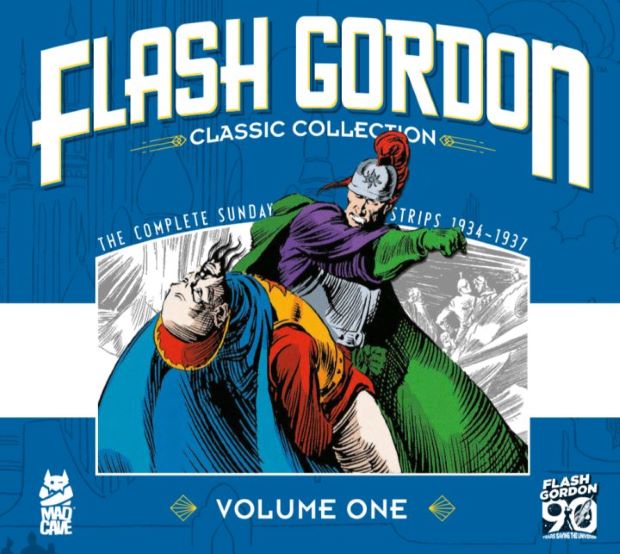
Despite how well-know the name Flash Gordon is, and indeed, the historical importance of the name in comic history, at no point has Flash Gordon ever really been a true pop culture phenomenon except in the Alex Raymond era in the thirties. What was the big deal, anyway? Well, Mad Cave Studios is releasing gorgeous editions of the Alex Raymond Sunday run, so we can finally see for ourselves.
And I do mean gorgeous. The colors are dynamic, even in a relatively simple strip which is just one of those Alex Raymond femmes magnanimously standing between her throne and flash. The action is crisp and tense even when the gang is fighting something as diminutive as ferocious flying squirrels. No matter how many times the main characters cheat death, a new cliffhanger begs the questions of how they’ll do it again with the latest grotesque monster or technological trap.
The review does mention the problematic issues of 1930s racism, colonialism, and sexism; and a lack of plot.
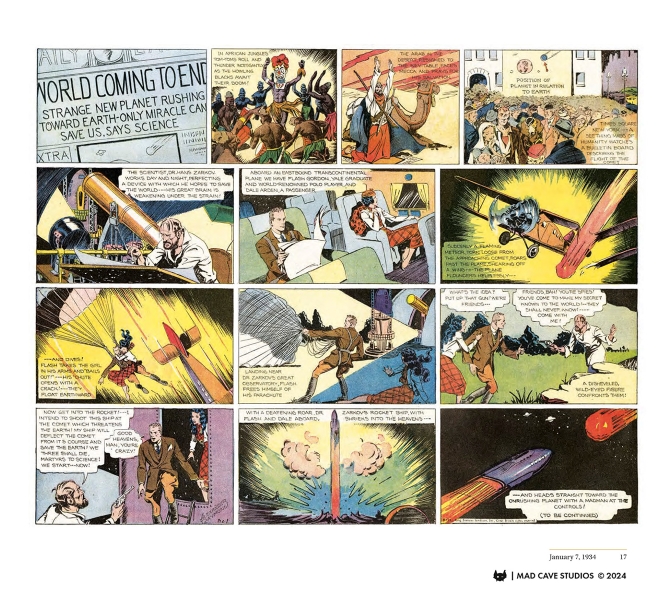
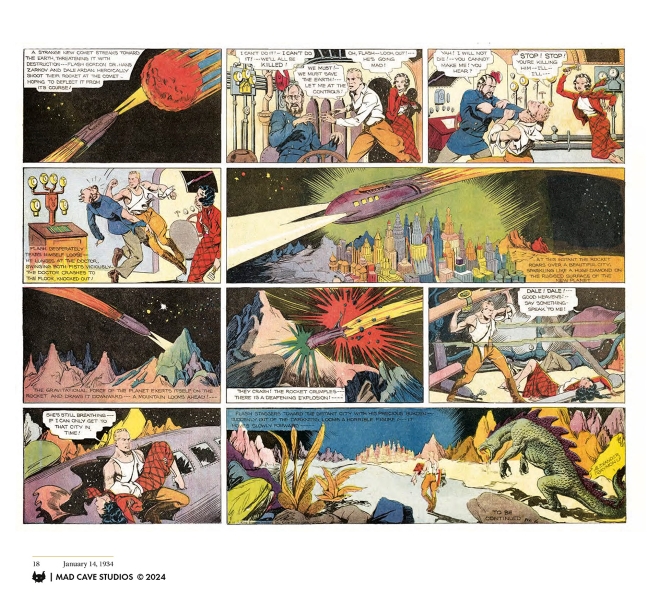
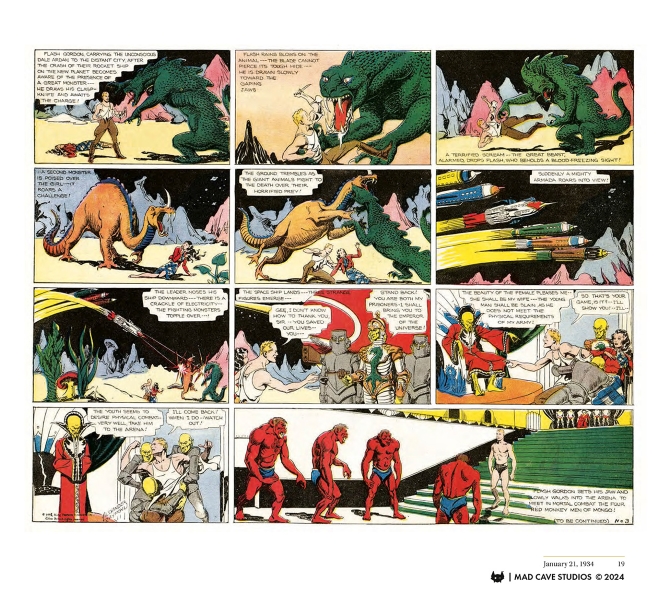


Comments
Comments are closed.